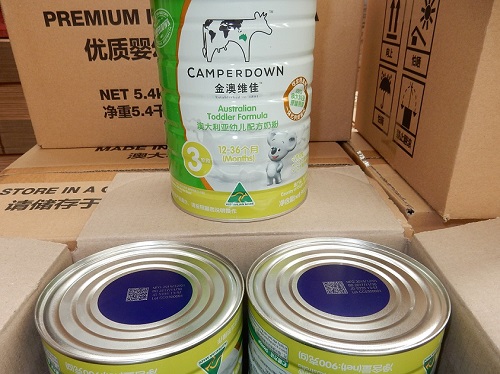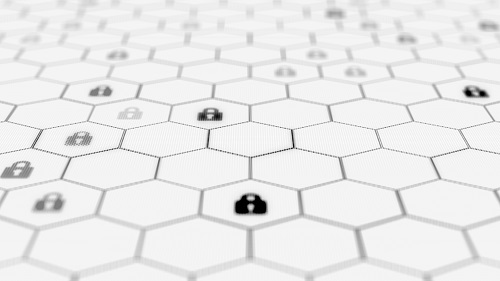How do you know that wagyu beef you’re eating is really from Hughenden, Central Queensland?
And how can you be sure the award-winning aged gruyere you got for Christmas really came from a small farm in Tasmania’s North?
Food provenance and supply chain integrity builds a transparent connection between producer and consumer, and maps the journey from ‘paddock to plate’.
In recent years it’s been the tech industry stepping up and helping consumers know exactly where their food comes from.
In 2015, Australian food and alcohol exports eclipsed $46 billion – 14% of the total goods and services exports for that year.
Renowned for high-quality produce, the agriculture sector has historically been, and continues to be, integral to the Australian economy.
However, there is a growing trend, particularly in Asia, where the high regard for Australian produce is being illegally monetised through food fraud and counterfeiting by unethical operators.
According to the Australian Trade and Investment Commission, global trade in fake goods is worth almost half a trillion dollars each year – and it’s rising.
Scammers specifically target some of Australia’s most esteemed produce – with cherries, olive oil, beef, honey, beer and wine all falling victim to counterfeiting scams in recent years.
Just last month, Chinese police seized 14,000 bottles of Australia’s esteemed Penfolds wine that were being sold on Taobao, an eBay style online marketplace run by Alibaba.
This followed an earlier trend in China where ‘Benfolds’ wine reached some popularity, alongside a Penfold’s ‘Lin’ 128.
A recent report, Fake Wine in China, suggested that 30% of all alcohol in China is counterfeit, with 70% of wine being fake.
Counterfeiters will refill used bottles of established wines with cheap or locally made wine before reselling it at a premium.
Alternatively, they will simply take a cheap bottle of wine and relabel it with a fake, and considerably more upmarket, label.
As well as threatening the integrity of Australian produce, food counterfeiting also poses a safety risk, with consumers left vulnerable to allergens, pathogens and harmful chemicals – as was the case in the 2004 Chinese baby formula scam, which left 13 infants dead.
And while this trend threatens to rob Australia of billions and implicate the safety of consumers, innovative solutions are beginning to emerge from the ICT sector.
There is now a plethora of ways to counter the counterfeiters through building greater integrity in the supply chain: encryption, QR codes, holograms, colour shifting ink, blockchain and many more.
If a producer can verify the journey of the product from paddock to plate, using technology, there can be no doubt over its integrity.
And the technology is here.
Putting the power in our hands
Based in Rowville, on the outskirts of Melbourne, is Matthews Australasia.
With strong ties to the food manufacturing industry dating back several decades, Matthews has spent decades working with partners to create innovative solutions in food traceability.
Their technology has a simple focus – allow manufacturers to authenticate their product and to track and trace.
Matthews Australasia CEO, Mark Dingley, told Information Age that the goal has always been to push the envelope.
“Using technology and software, Matthews Australasia has developed some innovative solutions around key problems for food manufacturers – counterfeiting being one,” he said.
“We’re a family business, and since the early days in the 1980s, Matthews Australasia has always strived to be innovative and to be the first to market with new solutions with our industry-unique systems approach.”
And the emergence of counterfeiting as an issue for manufacturers has created an industry-wide need for solutions.
Serialisation is an existing solution that has proven successful for Matthews over the years.
“Serialisation is essentially a simple process, and it’s not new, however the software and technology around it that Matthews has developed, and is involved in, are cutting edge,” said Dingley.
“Very simply, serialisation involves assigning and marking each product with a unique identifier.
“This generally happens during the manufacturing process, using specialised marking technologies — so there’s the first cutting-edge aspect.”
The unique identifier will take shape in the form of a barcode or 2D code -- for Matthews this is a Quick Response (QR) code.
.jpg)
Serialisation uses a unique identifier. Source: Supplied.
While QR codes date back to the 90s, they are currently a hot item when it comes to food provenance.
Incidents such as the baby formula scam have left consumers, particularly those in China, with a desire to know where their food comes from.
Enter the smartphone.
“Where a barcode or a 2D code like a QR code is used, the end consumer can then check the authenticity of the product before they open the packaging just by scanning the code via their smartphone app,” said Dingley.
In recent times, Matthews has worked closely with Camperdown Dairy to create a platform that allows consumers to use their smartphones to check the authenticity of food.
“Working with cloud-based authenticity platform Trust Codes, Matthews developed a system that uses our Solaris scribing laser to print each tin of [Camperdown Dairy] infant milk formula with a unique, serialised Trust Code that is embedded in the printed QR barcode,” said Dingley.
The fact that infant baby milk formula is a product that Chinese consumers are demanding be authenticated is little coincidence.
“The entire solution is managed by our award-winning iDSnet software platform,” continued Dingley.
“Our iDSnet software integrates with Trust Codes and the advanced Solaris laser scribing system on the production line, to give Camperdown an end-to-end solution.
“The printed QR code allows consumers to scan and identify the individual product and report its history; it also displays key information about Camperdown Dairy International, Australian dairy products, and how best to consume the product.
“The code works with any smartphone. There is no dedicated app to download, which we considered to be a major barrier to adoption.”

The QR codes used by Matthews on Camperdown Dairy products. Source: Supplied.
A vigilant, smartphone-friendly technology that empowers the customer sounds like the perfect platform to take down the counterfeiting industry.
But it’s not without its limitations.
Serialisation/track and trace technology remains vulnerable to hacking, according to a World Health Organization report on anti-counterfeit technologies.
The QR codes central to operation may not scan if damaged, while the complexity of the data being tracked presents a challenge in itself.
How about blockchain?
Perhaps Alibaba, PricewaterhouseCoopers (PwC), Blackmores and Australia Post were aware of these complexities in March, when they took a major step towards fighting counterfeiting, but in a different direction.
On 24 March 2017, the four organisations signed a Memorandum of Understanding vowing to take down counterfeiting using “a pilot blockchain technologies solution model.”
The technology allows anyone to search for all events related to a product in the supply chain through the blockchain database, giving independent verification.
“Fraud is a growing global problem in the supply chain, and no product is immune to it,” PwC Greater China Chairman, Raymund Chao said at the time.
“We demonstrate the power of our network in working seamlessly cross-border and cross-discipline to assist stakeholders in the food industry seeking to improve supply chain transparency and create a safe and trusted marketplace for consumers. We envisage our services to Alibaba will create impact that will truly deliver on our firm’s purpose.”
Although the blockchain project is in full swing, it is still not the first line of defence.
It was Alibaba who reported the recent Penfolds counterfeiting scandal to police in China, leading to the arrest of 13 suspects.
However, a spokesperson from Alibaba confirmed the crackdown was “via another Alibaba anti-counterfeit program in China and unrelated to the blockchain project.”
While agricultural supply chain transactions are typically recorded in isolated data silos, blockchain is not owned by a central authority and is operated as a collective, making it a neutral ground for supply chain information.
The distributed ledger technology means that anyone can check various steps in the supply chain.
CSIRO’s Data61, Australia’s data innovation network, recently publicised the work they are doing regarding using blockchain technology to secure supply chains.
“Food provenance, or more broadly the issue of supply chain integrity, has been identified as one of those areas where there’s significant potential [for blockchain technology],” said Peter Carter from Data61.
“The current systems that exist in many global supply chains are very fragmented, and that’s leading to a lot of siloed information.
“There’s a lot of work to be done to integrate those data sources.”
So, if there is a clear industry demand, and capable ready-to-use technology, why isn't blockchain already being used to monitor every single supply chain?
According to Carter, there are a few obstacles that still need to be leaped.
“The technology itself is not new, distributed ledger has been used for many years for tracking data provenance, particularly within science research, so it’s not a new concept,” he said.
“Blockchain is obviously getting a lot of news in recent times, and probably to some degree that’s hype.”

Could blockchain be the industry's solution?
A recent Gartner analysis identified blockchain as a technology in the ‘hype cycle’, about to enter its journey into the ‘Trough of Disillusionment’.
That’s not to say the technology doesn’t work; it simply means public interest in blockchain may wane in the coming years, meaning track and trace solutions may remain viable.
Data61 is hoping to guide the industry through the hype, and deliver effective solutions to ensure food provenance.
While it has invested in blockchain as a solution, it is not its sole focus.
“We’re not rushing out to try and build a solution,” Carter said.
“What we’re really doing is providing direction and in some cases setting some lighthouses up so that people can navigate.
“Blockchain is just one form of cryptographic engineering which is changing the way that industry may work.
“There are other technologies that are at least as relevant.
“For example, we do significant work on privacy-preserving technology to help address issues around confidential and sensitive information.”
What happens next?
Since the announcement of the Memorandum of Understanding in March, discussion on the blockchain project from each organisation has been deafeningly silent, and there does not appear to be a timeframe on when it will be released to market.
Far simpler tech solutions have also begun to emerge in the war against counterfeiters.
One Tasmanian cherry producer now asks consumers to send them any evidence of counterfeiting via social media, as an extra line of defence.
Many counterfeiters also use social media as a platform to promote their product, meaning authorities can shut down operations from the source, if they are identified.
While it is clear that the scale of problem is gigantic, it is also evident that the number of viable and effective solutions is continuing to grow.
It does not appear as though any one technology will entirely shut down the counterfeiting industry in the foreseeable future, but through combining different methods and creating multiple layers of defence, the challenge becomes greater for the frauds.










